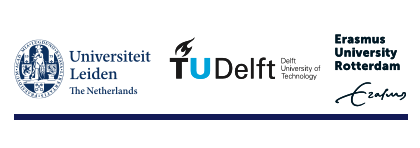In February’s session of Digital Food, Sjaak Wolfert, Strategic Senior Scientist at Wageningen University, gives an idea of the fragmentation that often occurs in the stages of digital innovation regarding the highs and lows of funding.
Lack of funding has been a consistent barrier to innovation for decades, especially with regard to digital innovations. Although money may present itself at the start-up stage, convincing investors to stay along for the ride can prove difficult.
There are a lot less funding options available for the in-between stages, when a lot of money is needed for the development of prototypes and pilot studies. Wolfert says policy makers should focus on this middle stage. “This is when applications are promising, but public financiers pull out and private providers of finance see too much risk.”
The agrifood sector has a lot to gain from the inclusion of new agrifood digital technologies entering the market. These technologies go a long way in progressing the market and getting more consumers involved with the process of innovation and digitalisation in the agricultural sector.
To bridge this gap between consumer and digital enterprises, and in addition to achieve solutions to fragmentation there are numerous pathways that can be taken into consideration for this. Sjaak Wolfert, in this Digital Food webinar, goes through these pathways and helps the audience to navigate between public and private interests in digital innovation in the agrifood sector.
There are a lot less funding options available for the in-between stages, when a lot of money is needed for the development of prototypes and pilot studies. Wolfert says policy makers should focus on this middle stage. “This is when applications are promising, but public financiers pull out and private providers of finance see too much risk.”
The agrifood sector has a lot to gain from the inclusion of new agrifood digital technologies entering the market. These technologies go a long way in progressing the market and getting more consumers involved with the process of innovation and digitalisation in the agricultural sector.
To bridge this gap between consumer and digital enterprises, and in addition to achieve solutions to fragmentation there are numerous pathways that can be taken into consideration for this. Sjaak Wolfert, in this Digital Food webinar, goes through these pathways and helps the audience to navigate between public and private interests in digital innovation in the agrifood sector.
Smart Agrifood Hubs
SmartAgriHubs is a €20 million EU Horizon 2020 initiative that brings together a partnership of over 164 agri-food industry partners from around Europe. The initiative intends to achieve European agriculture's digitalization by nurturing an agricultural innovation ecosystem dedicated to quality, sustainability, and prosperity.
SmartAgriHubs takes a multi-stakeholder strategy to this objective, encompassing a comprehensive value-chain network spanning all EU member states. A diversified network of start-ups, SMEs, business and service providers, technical professionals, and end-users make up the consortium. The end-users are the project's heart and soul, and they are the driving force behind digital transformation. A dense ecosystem of 140 Digital Innovation Hubs embedded within 9 Regional Clusters drives the development and implementation of digital solutions.
SmartAgriHubs is a €20 million EU Horizon 2020 initiative that brings together a partnership of over 164 agri-food industry partners from around Europe. The initiative intends to achieve European agriculture's digitalization by nurturing an agricultural innovation ecosystem dedicated to quality, sustainability, and prosperity.
SmartAgriHubs takes a multi-stakeholder strategy to this objective, encompassing a comprehensive value-chain network spanning all EU member states. A diversified network of start-ups, SMEs, business and service providers, technical professionals, and end-users make up the consortium. The end-users are the project's heart and soul, and they are the driving force behind digital transformation. A dense ecosystem of 140 Digital Innovation Hubs embedded within 9 Regional Clusters drives the development and implementation of digital solutions.
Related


